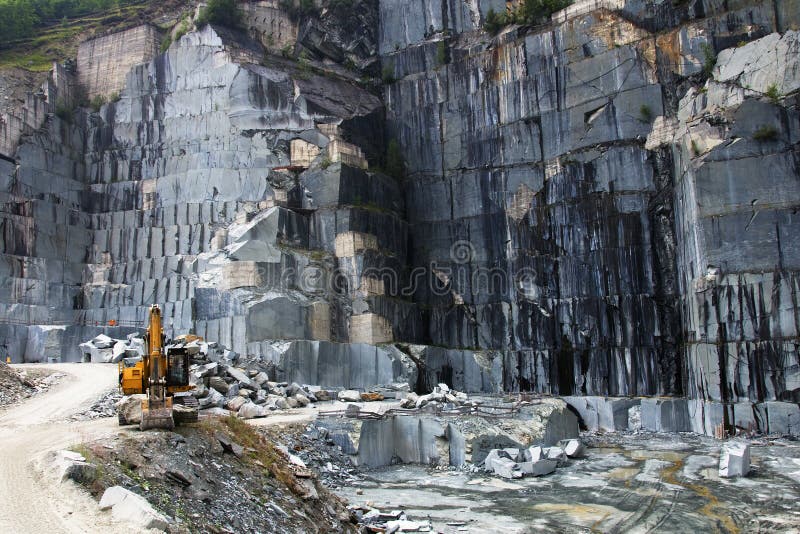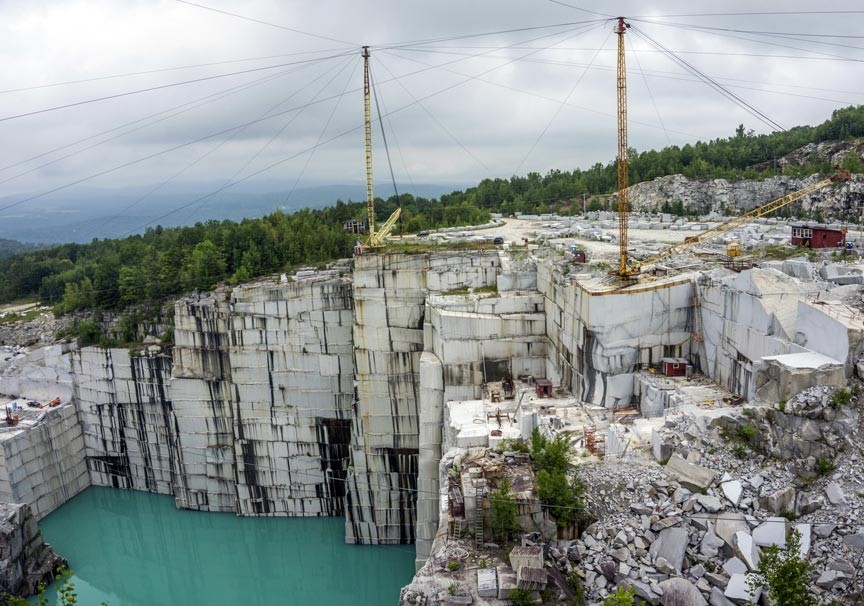Letting Loose the Beauty and Sturdiness of Granite Quarry: A Trip Via Time
Granite quarries stand as testaments to both the geological wonders of our world and the enduring workmanship of mankind. The journey through time that granite quarrying represents is a compelling narrative of technology, willpower, and the intricate dancing in between nature and market. Recognizing the beginnings of this age-old practice, the development of techniques and devices employed, and the modern importance of granite quarrying introduces a tapestry abundant in history and relevance. As we peel off back the layers of time and dive into the complex world of granite quarrying, we uncover a tale that not just showcases the appeal and toughness of this marvelous stone but also loses light on the extensive effect it has carried human beings past and present.

The Origins of Granite Quarrying
In the record of history, the beginnings of granite quarrying can be traced back to old worlds where the quest for durable building products fueled the introduction of this classic craft. From the magnificent frameworks of old Egypt to the magnificent temples of Greece, granite has been admired for its stamina, elegance, and longevity. The Egyptians, with their sophisticated quarrying methods, were amongst the very first to remove granite widespread, utilizing it to create monumental pyramids and complex statuaries that have actually stood up to the examination of time.
As worlds progressed, so did the approaches of quarrying granite. The Romans further refined the strategies, establishing tools and machinery to essence and transportation granite over substantial ranges for their building projects. The sturdiness and visual allure of granite made it a prized material for basilicas, monuments, and sculptures throughout the ages.
Today, the tradition of ancient quarrying methods survives on, with contemporary innovation boosting efficiency while still admiring the craftsmanship of our ancestors. The origins of granite quarrying offer as a testament to human resourcefulness and the long-lasting appeal of this noble rock.
Tools and Strategies of Quarrying
Quarrying granite needs customized devices to extract the stone from the earth effectively and with accuracy. Modern quarries utilize diamond-wire saws, high-powered drills, and dynamites to damage apart the granite in a controlled way.
Along with advanced machinery, typical hand tools are still utilized in particular quarrying procedures to guarantee fragile accuracy in extracting the stone. Chisels, hammers, and wedges are used by proficient quarry workers to different granite obstructs along natural fractures, a strategy that has been given via generations.
Additionally, techniques such as piercing vertical and straight openings for putting feathers and wedges, along with the controlled use dynamites in strategic places, make it possible for quarry workers to extract granite effectively while preserving the honesty of the stone. The harmony in between modern innovation and traditional workmanship is vital to the sustainable quarrying of granite for generations ahead.
Development of Granite Quarries
The change of granite quarries with time reveals an interesting story of technological advancement and sector advancement. From ancient times where hand-operated tools like blades and hammers were made use of to draw out granite blocks, to the industrial revolution introducing steam-powered equipment for faster quarrying, the evolution of granite quarries has been marked by significant advancements. In recent decades, the advent of diamond cord saws and advanced boring innovations has actually changed the removal procedure, permitting for extra specific cuts and lowered wastage of raw material.

Granite Quarrying in Modern Times
The progression of granite quarrying techniques from historical reliance on guidebook devices to the sophisticated approaches of modern-day times emphasizes an impressive trip of technical advancement and sustainability methods within the market. In contemporary granite quarrying, advanced equipment such as ruby cord saws, high-capacity excavators, and electronic boring equipment have revolutionized the removal procedure. These tools enhance efficiency, accuracy, and safety, enabling for larger quantities of granite to be drawn out in a shorter duration contrasted to typical methods.
Moreover, modern quarrying methods focus official site on sustainability and ecological stewardship - granite quarries in south africa. Companies are progressively taking on environment-friendly methods like water recycling systems, dirt reductions innovations, and recovery strategies for worn down quarries. These initiatives aim to lessen the ecological impact of granite extraction, conserve natural deposits, and recover quarried landscapes to their initial state
Furthermore, the assimilation of electronic innovations like drones, general practitioner monitoring, and 3D modeling has made it possible for quarry drivers to maximize operations, enhance decision-making, and make certain the lasting monitoring of resources. By embracing innovation and sustainability, the granite quarrying market in modern times continues to thrive while supporting environmental responsibility.

Protecting and Shielding Granite Quarries
Among the evolving landscape of granite quarrying methods, preservation and security of these beneficial natural sites have ended up being extremely important concerns for industry stakeholders and environmental advocates alike. As granite quarries continue to be a crucial resource of this desired rock, it is essential to adopt sustainable strategies that ensure their longevity and secure bordering ecological communities.
Protecting granite quarries includes applying reliable recovery plans to bring back the land post-extraction. granite quarries in south africa. This process includes improving the surface, replanting indigenous plants, and developing habitats for wildlife to grow. By recovering quarries to their natural state, the environmental influence can be reduced, and the beauty of these landscapes can sustain for future generations to appreciate
Furthermore, shielding granite quarries needs enforcing laws that regulate responsible quarrying techniques. This includes surveillance water Click Here high quality, controlling dirt emissions, and taking care of noise degrees to alleviate disturbances to the atmosphere and nearby areas. Collective initiatives between industry players, governmental bodies, and conservation teams are important in promoting these requirements and guaranteeing the lasting use granite quarries.
Final Thought
Finally, the journey with time in granite quarrying discloses the origins, tools, techniques, and advancement of this method. The modern-day period has brought improvements in quarrying strategies, allowing the preservation and defense of these useful natural sources. It is essential to remain to support lasting practices to make certain the appeal and durability of granite quarries for future generations to appreciate.